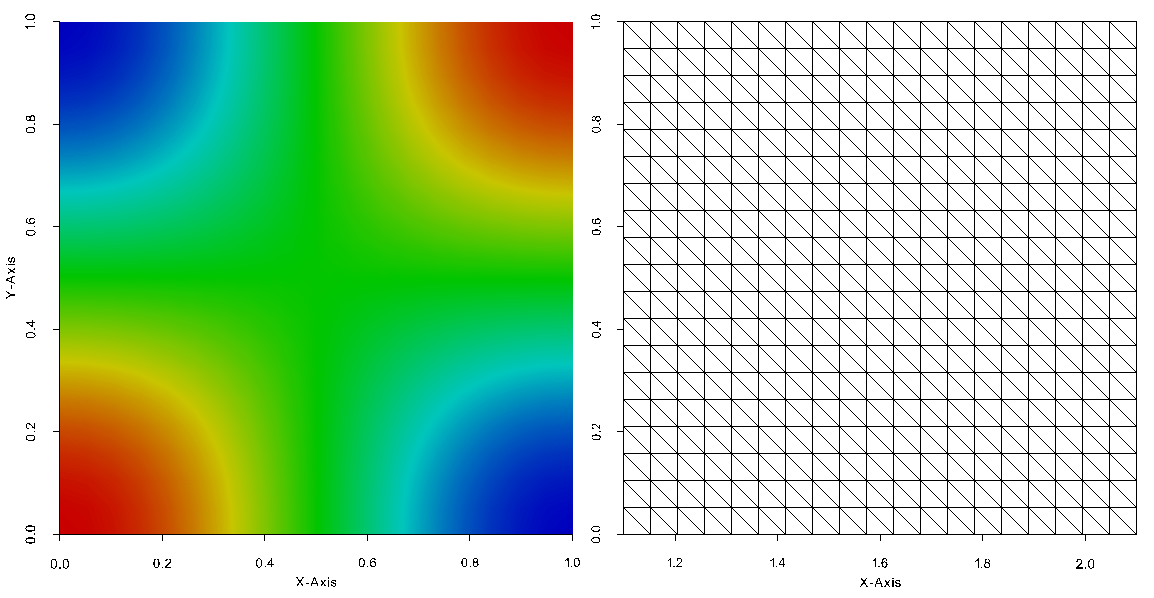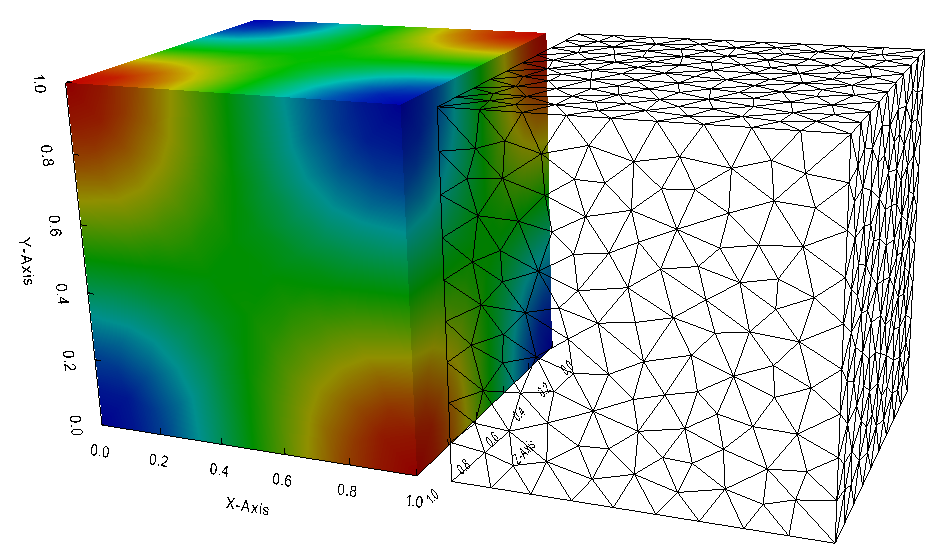2D/3D Laplace problem with Neumann condition#
First, let us consider the case of the homogeneous Neumann condition on \(\partial \Omega\), the boundary of \(\Omega\):
The variational formulation we deal with is
The following main program corresponds to solving this problem on unity square \(\Omega=]0,1[\times ]0,1[\) with \(f(x)=\cos \pi x\cos\pi y\) using P1 Lagrange element (20x20 elements):
#include "xlife++.h"
using namespace xlifepp;
Real cosx2(const Point& P, Parameters& pa = defaultParameters)
{
Real x=P(1), y=P(2);
return cos(pi_ * x) * cos(pi_ * y);
}
int main(int argc, char** argv)
{
init(argc, argv, _lang=en);
// mesh square
SquareGeo sq(_origin=Point(0., 0.), _length=1, _nnodes=21);
Mesh mesh2d(sq, _shape=triangle, _generator=structured);
Domain omega = mesh2d.domain("Omega");
// build space and unknown
Space Vk(_domain=omega, _interpolation=P1, _name="Vk");
Unknown u(Vk, _name="u");
TestFunction v(u, _name="v");
// define variational formulation
BilinearForm auv = intg(omega, grad(u) | grad(v)) + intg(omega, u * v);
LinearForm fv=intg(omega, cosx2 * v);
// compute matrix and right hand side
TermMatrix A(auv, _name="a(u, v)");
TermVector B(fv, _name="f(v)");
// LLt factorize and solve
TermMatrix LD;
ldltFactorize(A, LD);
TermVector U = factSolve(LD, B);
saveToFile("U_LN", U, _format=vtu);
return 0;
}

Fig. 26 Solution of the Laplace 2D problem with Neumann condition on the square \([0,1]^2\)#
Solving this problem with P2 Lagrange interpolation should be the same except the line defining the space:
Space Vh(_domain=omega, _interpolation=P2, _name="Vh", _optimizeNumbering);
Solving this problem in a 3D domain should be the same except the line defining the mesh and the right-hand side function. For instance, on the unity cube, the mesh construction command using gmsh tool is:
Real f(const Point& P, Parameters& pa = defaultParameters)
{
Real x=P(1), y=P(2), z=P(3);
return cos(pi*x) * cos(pi*y) * cos(pi*z);
}
...
Mesh mesh(Cube(_origin=Point(0.,0.,0.), _length=1, _nnodes=10), _generator=gmsh, _name="P1 mesh");
...

Fig. 27 Solution of the Laplace 3D problem with Neumann condition on the unit cube \([0,1]^3\)#
